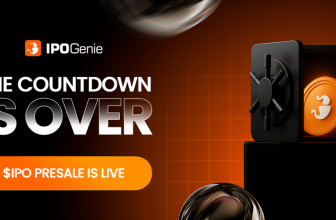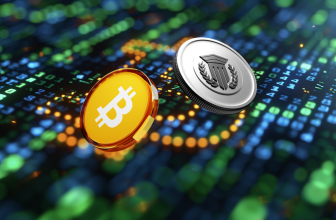
Ever since Mastercoin launched the first one back in 2013, initial coin offerings were all the rage of the crypto world. Essentially all you had to do to start one was to create a smart contract defining the terms of your token, write a whitepaper and offer your tokens to the market.
While following this way of launching a cryptocurrency resulted in several positive and successful projects (Ethereum, the “father” of most modern crypto projects, was itself kickstarted through an ICO), we certainly saw a significant amount of horror stories emerge as a result of the practice.

Many prosperous cryptocurrency endeavors failed to get off the ground due to not being able to round up enough people willing to invest in their idea. This lack of investment came mostly as a result of the project’s team not having enough initial capital to pay for marketing and exchange listings, two expenses that regularly end up costing millions of dollars.
According to Autonomous Research, ICO issuers are usually required to fork out anywhere from $1 million to $3 million to have their token listed on a major exchange.
Another problem closely related to ICOs is the amount of projects that did manage to receive funding but ultimately turned out to be complete scams. A study conducted by Satis Group determined that approximately 80% of ICO projects are scams, with fake projects attracting about one tenth of all funds invested. Due to a general lack of regulation, these fraudulent schemes muddied the ICO waters so much that the trend died down significantly in 2018/2019.
All this made navigating the ICO space quite difficult for both the prospering projects and their potential investors, due to neither having many guarantees or safeties that would protect their interests.
Getting fed up of the negatives and uncertainty, parts of the community turned to a new model of project financing called initial exchange offering (IEO). Today we’ll be taking a closer look at what IEOs actually are and how/if they are actually better than ICOs.
What you'll learn 👉
What is IEO?
IEOs are a new form of crypto financing that has been becoming more and more popular lately. What this practice does is introduce a crypto exchange into one project’s fundraising effort in a much more direct, centralized, hands-on manner.
The exchange essentially becomes the counterparty in the entire token launching process (whereas with ICOs the counterparty was the development team behind the token), enabling crypto projects to fundraise directly on the platform.
The tokens sold in an IEO are distributed to the investors by the exchange itself, unlike with ICO where the developers are in charge of this activity. During ICOs, the development team will need to create their tokens and distribute them to those who buy them (investors, exchanges etc). With IEO, a single exchange takes this burden on itself; after the devs mint the tokens, the currency is sent to the exchange which then performs the sale/distribution.
Investors don’t need to send crypto to developers’ smart contract to get their tokens. The purchase can be completed through their existing exchange accounts. You’ll need to own an account on the exchange (likely KYC and AML verified) and some cryptocurrency that the exchange accepts for the IEO token; once the exchange announces the date of the IEO, you’ll get the chance to bid on your own tokens.
Prior to selling a token, the exchange will have the project vetted and researched thoroughly. This is done to confirm, among other things, that the token has a proper use case and good developers that won’t exit scam and dump their bags on initial investors.
Naturally, the exchanges don’t perform these services out of goodness of their hearts. The terms of compensation are usually a secret held between the project and the exchange themselves, but it’s fair to presume that a certain part of it is paid in the token that’s getting listed. This ensures that the exchange has a vested interest in the IEO succeeding and will do its best to make that a reality.
IEOs bring a whole host of interesting considerations to everyone involved. To begin, the project:
- Gets easy access to a large potential investor base
- Gets help with token distribution
- Can be sure that investors are real, trustworthy individuals
- Gets a vote of confidence by being officially backed by a major exchange and a marketing boost from being promoted on the exchange’s social media
- Will immediately get listed on the exchange post-IEO, meaning that there certainly won’t be a lack of token liquidity on the market. This can potentially be an issue as pre-IEO investors might start selling their tokens (as we saw with Fetch.ai, BTT and other Binance Launchpad projects)
On the other hand, the exchange:
- Getting paid for hosting and organizing the token sale, as well as listing the token
- Increased volume of transactions on the platform from the new listing
- Potentially increased user base as new users join, looking to invest in the IEO
- Allows the exchange in-depth access into the project to determine if it’s fraudulent or not before listing it
- Potentially increased reputation if the project actually succeeds in the long run
Finally, the investors have their own host of benefits:
- Easy access to new up and coming cryptocurrency projects
- Can choose to trust the exchange that the project isn’t a scam; alternatively they can check out the exchange’s research data which is usually made public prior to the IEO
- Can easily trade the tokens after they are listed on the exchange
How to Take Part in an IEO
The process is quite simple:
- Find a project willing to conduct an IEO. This will be announced on the project’s/exchange’s social media/websites.
- See which exchanges will take part in the IEO. The project can decide to go with a single exchange or eventually with more of them; this has so far not happened yet.
- Register on the exchange and complete your KYC/AML registrations.
- Find out what cryptocurrency you’ll need to purchase the tokens.
- Learn the date your IEO starts and bid on your tokens when the time comes.
There might me some slight variations to the process from project to project and from one exchange to another but, for the most part, things should follow the pattern listed above.
History/Future of IEOs
First IEO-conducting exchange was Binance which opened its token Launchpad service sometime in 2017. Bread ($6 million) and Gifto ($3.4 million) token sales were the first projects that jumped off the Launchpad, and they were followed by the recent BTT, Fetch.ai and Celer Network token launches.
The exchange primarily accepts its own BNB utility token as means of payment for these IEO tokens; there are plans to launch additional projects in the future so stock up on BNB and watch for future announcements if you are interested in a piece of those Binance Launchpad goodies.
Other exchanges followed suit, launching their own token start-up endeavors not long after. Bittrex attempted to launch its first token in mid-March of 2019 but some unforeseen behavior from the project resulted in the IEO getting cancelled.
Bitmax recently introduced its Launchpad program by presenting DOS, a decentralized oracle service, to its investors. Malta-based crypto exchange OKEx announced its own program called OK Jumpstart, one that will aim to incubate high potential projects and support early entrepreneurs.
EXMO cryptocurrency platform launched an IEO in February 2019, choosing Paytomat as its first partner project. KuCoin Spotlight and Huobi Prime are among other major Launchpad projects that were recently confirmed.
Should You, The Investor, Take Part in an IEO?
No one can really give you a straight answer to this question. IEOs introduce a centralized layer of monitoring and security that isn’t present with ICOs. Some investors might appreciate that new form of trust; others might find it intrusive and “not in the spirit of crypto”.
Ultimately, the benefits this model has over classical ICOs seem to outweigh the negatives significantly, as far as token launching projects and exchanges are concerned. This means that soon enough you might not even have a choice and will be forced to go with the flow and accept IEOs, if you want to get in early on that potential 100x token.
This probably won’t be that bad, as the new format could help restore some of the trust people lost in crypto due to ICOs. Who knows, we might even end up with a new bull run thanks to initial exchange offerings.








